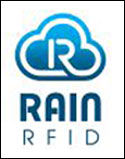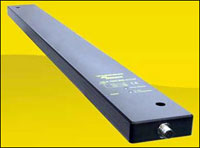May 29, 2014The following are news announcements made during the past week by the following organizations:
GS1; Turck; WeTag; the Russia Customs Union; and RAIN RFID.
GS1 Ratifies New Versions of EPCIS and CBV Standards
GS1 has ratified new versions of its Electronic Product Code Information Services (EPCIS) and Core Business Vocabulary (CBV) standards. EPCIS is a standard enabling businesses to exchange RFID and product data in real time, while CBV is used within the various EPCIS events. Work on the EPCIS 1.1 and CBV 1.1 standards began two years ago; the first version of EPCIS was released in 2007, according to Ken Traub, the founder of Ken Traub Consulting and a GS1 standards expert who served as the editor for both standards documents, under the GS1 Global Standards Management Process (GSMP). Originally designed for tracking items that have individual serial numbers, the updated EPCIS 1.1 standard now supports lot tracking—a request initiated by a variety of stakeholders but largely from the food industry, including fresh produce and meat companies that still want to track lots rather than individual items. Traub says that the addition of lot tracking as part of EPCIS will enable industries that do not yet track individual items to exchange transaction data, and will also provide for a much easier migration path if and when those industries do decide to begin tracking individual, serialized items. Another industry that stands to benefit from the addition of lot tracking to the EPCIS standard is the pharmaceutical industry, since the Drug Supply Chain Security Act (DSCSA), signed into law in November 2013, requires lot tracking starting next year and running through November 2023. Initially, pharmaceutical companies had been working toward individual item tracking, but the DSCSA has put that on hold (see Takes a Back Seat When It Comes to Electronic Pedigrees). Another new feature is a new event type, known as "TransformationEvent," which can be used to document relationships during input and output processes. For example, Traub explains, the TransformationEvent can be employed to document the relationship developed between RFID-tagged sides of beef that are placed into a grinder and turned into 100 pounds of RFID-tagged hamburger meat. "Together, EPCIS and CBV lay the foundation for business partners to share real-time information about the movement, history, and status of goods in the physical world, throughout the global supply chain," says Craig Alan Repec, GS1's senior manager of EPC technology. Benefits of the new versions include improved product traceability, supply chain security, regulatory compliance and interoperability. Specifically, Repec says, EPCIS V1.1 includes the capability to share lot- or batch-based event data, enabling users to both document and reproduce product attributes for all partners involved in the chain of custody or ownership. EPCIS V1.1 also supports Instance/Lot Master Data (ILMD), which comprises descriptive attributes regarding specific objects, lots or batches. The updated standard also supports source or destination identifiers, to provide supplemental information pertaining to the transfer of custody or ownership; geo-location coordinates, for use at locations where a global location number (GLN) is not feasible (for instance, the precise point at sea at which fish are caught); and transformation events involving the irreversible input of one or more objects into one or more outputs (processed food ingredients, for example).
Turck Unveils New HF Read-Write Head With Extended Surface Area for Improved Functionality
Turck has announced a new high-frequency (HF) RFID read-write head suitable for conveyors and other applications that require close read ranges of approximately 800 millimeters (31.5 inches). According to the company, the Q80L800 HF read-write head can be operated on Turck's BL ident solution, designed for integration into existing control systems, to provide an all-in-one industrial RFID solution. The Q80L800, which measures 80 millimeters by 800 millimeters by 25 millimeters (3.1 inches by 31.5 inches by 1 inch), combines an antenna and electronics in an IP 67-rated housing (signifying that it is dustproof and waterproof) , the company reports, making it a suitable solution for conveyor and web-processing applications. The Q80L800 supports all tags complying with the ISO 15693 standard, including Turck's passive HF tags, which allow direct mounting on metal and can be used at high temperatures or in autoclaves. "The addition of the Q80L800 HF read/write head broadens our RFID portfolio and provides our customers with an improved solution," said Matt Boudjouk, Turck's product manager, in a prepared statement. "The large sensing area provides customers with improved performance and an RFID solution that reads tags at a higher rate whenever the tags are mounted in a variety of locations."
WeTag Unveils Battery-Free Bluetooth Tag for Locating Misplaced or Lost Personal Items
WeTag Inc., a startup based in Plano, Texas, has announced that it is developing a Bluetooth Low Energy (BLE) RFID tag, known as iFind, that requires no battery. Instead, it collects and stores power from ambient electromagnetic sources, such as wireless routers and other Wi-Fi devices, cell-phone antennas and TV aerials, and stores it in a power bank. The patent-pending technology eliminates the need to replace or charge a battery, according to the company, and the iFind tag can be used for up to two decades. Because it is battery-free, the iFind tag is thin, measuring only 1.25 inches by 1.06 inches by 0.09 inch (32 millimeters by 27 millimeters by 2.4 millimeters), and can be slipped into or attached to practically anything, Turck reports. It has a detection range of up to 200 feet (60 meters) and works with a smartphone app, the company adds. The tag, which communicates with iOS or Android devices via BLE technology, can be attached to personal items such as wallets, keys or pets. When an item is misplaced or lost, the smartphone app can be used to find it. Each tag has a unique ID number, which can be shared with others, who can then utilize their smartphones to locate a misplaced or lost item. In Rope mode, the iFind app is designed to tell a user when his or her tagged object—such as keys or a wallet—has gone out of range; if, for example, a person drops a wallet at a restaurant, the tag will beep and that individual's phone will receive a notification that the distance between the two exceeds the 200-foot range. The iFind tag is expected to ship in October of this year. WeTag is currently marketing the iFind through its Kickstarter campaign—which, to date, has gained 3,894 backers and raised $197,677.
Russia Customs Union Plans to Test RFID to Thwart Contraband Fur
The Customs Union of Russia, Belarus and Kazakhstan has reportedly proposed using RFID tags on all fur imports, according to this article, published in the The Moscow Times. The article reports that up to 80 percent of Russian fur imports are undeclared or under-declared, according to a study conducted by the Higher School of Economics (HSE), and lobby group Retail Companies Association. The article also reports that, according to Alyona Orlova, a spokesperson for fur producer Moskovskaya Mekhovaya Kompaniya (MMK), up to half of Russian furs may be contraband. To combat these issues, a pilot project aimed at tracking imported furs will launch in 2015, according to a decree posted on the Eurasian Economic Commission's website, and a working group is currently being set up to outline the program, the article reports. In the article, Orlova says MMK would benefit from RFID-tagging all imports, especially because Illegal importers often utilize subpar fur that can be sold at half the price of legal products, whereas MMK manufactures its clothing in Russia using high-end fur purchased abroad, primarily in northern Europe.
RAIN RFID Adds New Member Category

RAIN RFID, the industry alliance for ultrahigh-frequency (UHF) radio frequency identification, has established a special membership category for all new members joining before Sept. 8, 2014. These new charter members will elect an additional board member at the first meeting of the alliance, according to Steve Halliday, RAIN's president, and will also receive a discount on their first year's membership dues. RAIN, founded by Impinj, Smartrac, Intel and Google, was announced at this year's RFID Journal LIVE! conference and exhibition, held in Orlando, Fla., in April 2014 (see Technology Companies Create Rain to Promote EPC UHF RFID Adoption). The organization was launched earlier this year as an industry alliance that promotes the awareness and adoption of UHF RFID technology (complying with the EPC Gen 2 and ISO 18000-63 standards) for business and consumer applications worldwide. Companies with further questions about the benefits of joining the alliance are invited to attend a webinar on July 8, 2014, at 10 am EDT. Details and a sign-up form can be found at RAIN's website.



